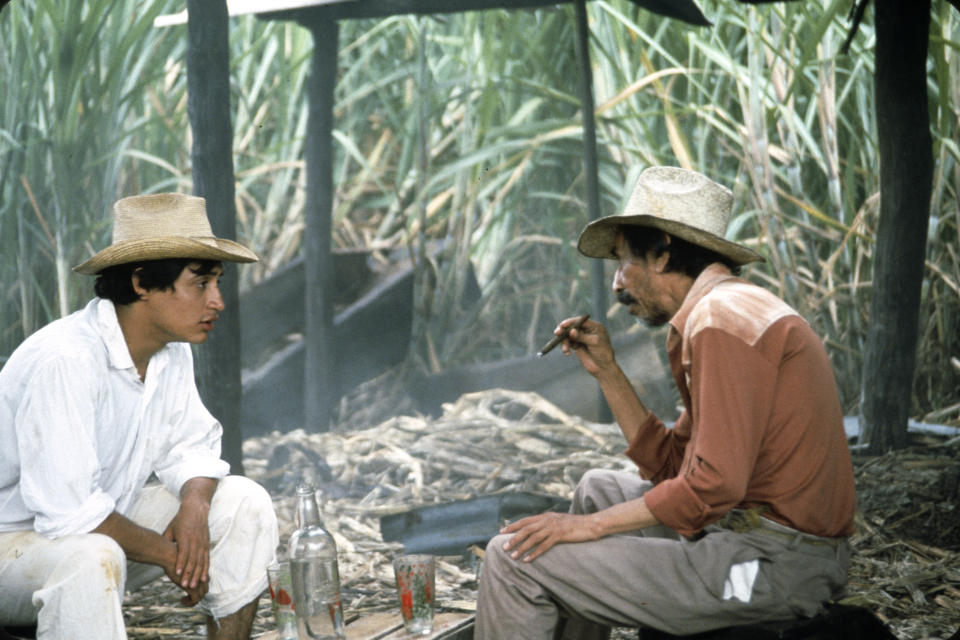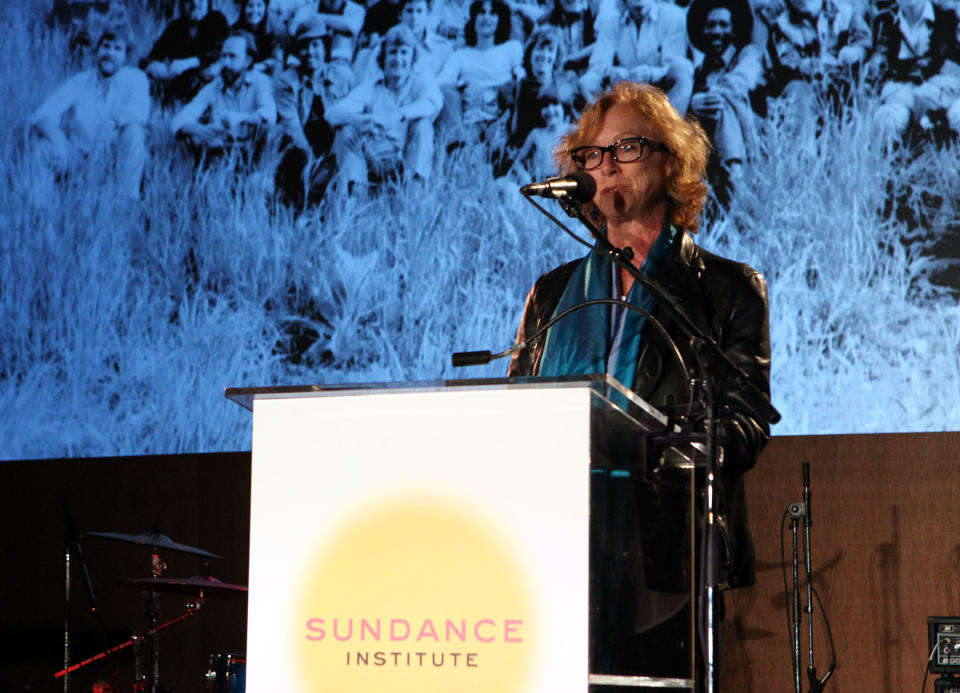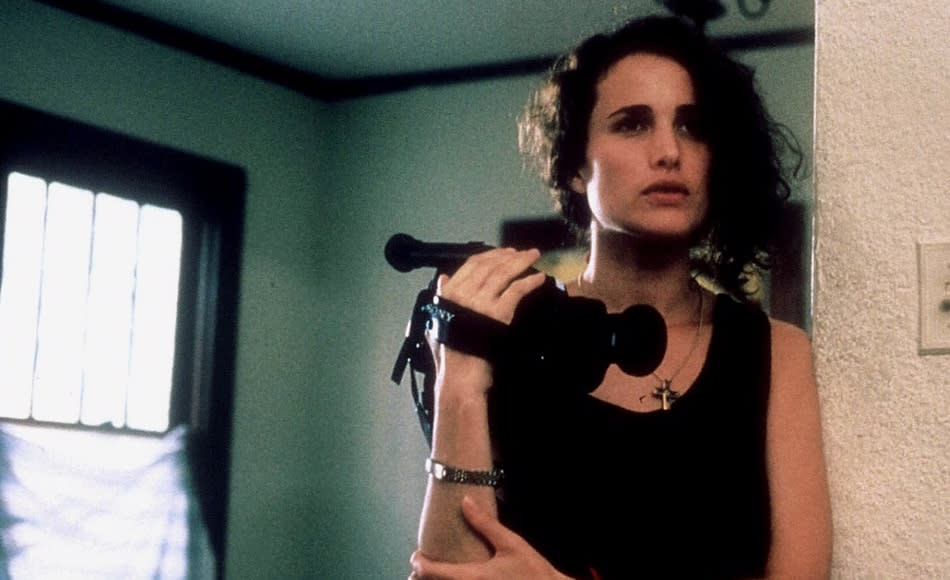Sorry, Blockbusters: America’s Real ’80s Cinema Legacy Is Robert Redford’s Sundance Institute
- Oops!Something went wrong.Please try again later.
- Oops!Something went wrong.Please try again later.
- Oops!Something went wrong.Please try again later.


For years, much of the film industry has considered Sundance as a ’90s legacy, one most famous for launching the festival that cemented a market for American independent film. However, the seeds for that phenomenon were sown in the previous decade.
Hollywood raced into the ’80s with its blockbuster juices flowing, as the box-office sensations of “Jaws” and then “Star Wars” rejuvenated the studio confidence in mass-market commercial storytelling, and the prospects of small-scale independent filmmaking seemed more marginalized than ever. Enter Robert Redford’s Sundance Institute, which launched its first feature film lab in 1981, and created a seminal resource for working outside the system still unparalleled in the U.S. today.
More from IndieWire
In the midst of the studios getting a second wind, Redford felt unnerved. Though the movie star made a successful pivot to directing with “Ordinary People” in 1980, he had long felt that Hollywood underserved movies made with an economy of means. The story goes that Redford’s experience on 1969’s “Downhill Racer,” which was made for under $2 million, helped him grasp the fundamental challenges of getting low-budget projects financed and distributed.
Around that time, he happened to buy a plot of land in Utah that he named Sundance after his character “Butch Cassidy and the Sundance Kid,” and spent the next several years incubating ideas for supporting more singular work as the tentpole frenzy blossomed around him.
By the late 1970s, Redford and his peers launched the U.S. Film Festival in Salt Lake City, but quickly realized that programming existing work wasn’t enough in a society devoid of any support system beyond executives looking at the bottom line. It was no coincidence that plans for the first Sundance lab took place as “The Empire Strikes Back” dominated theaters and proved that franchise filmmaking would only accelerate in the years ahead. Indiana Jones took out his whip the next year.
“It was absolutely a response to that,” Michelle Satter, the founding director of Sundance’s Feature Film Program, said in a phone call with IndieWire last month. “These films were coming through studios that created a real focus on mainstream storytelling. For Redford, it was about bringing artists together in a safe place for experimentaion, pushing boundaries, and really supporting the humanity of the filmmaking process. It was a culture of generosity.” Satter called IndieWire from that same plot of land, on a break from the 2023 Sundance Producers Lab — now in its 16th year, and one of countless initiatives that she has helped launch over the decades.
Satter’s impact on American independent cinema through the labs is incalculable, as it catalyzed the potential for filmmakers to develop their craft beyond the film school bubble or studio pitch sessions, and without solely focusing on profit motive. (At long last, the Academy of Motion Pictures Arts and Sciences will hand her an honorary Oscar at its Governers Awards this year.) Satter was working as an events and public relations consultant in Boston when she was brought onboard by early Sundance admistrative director Jenny Waltz Selby.
In June 1981, Satter organized a three-day producers weekend event that set the stage for the filmmaking lab a short time later. “It spoke to everything that interested me in terms of being able to support underrepresented storytellers and just really bold, unique voices,” she said.

In recent years, the focus of the Sundance Institute Labs has centered around Directing, Screenwriting, and Producing workshops, with participants receiving candid notes from mentors established in the industry. That formula was already in place in the first edition, where mentors included Sydney Pollack, Waldo Salt, Morgan Freeman, and Karl Malden. Among the 16 filmmaker participants were Larry Littlebird, whose presence reflected Redford’s longstanding commitment to supporting indigenous voices, and attendend to develop his feature “The Man Who Killed the Deer.” The lab also welcomed Gregory Nava’s Guatemalan immigration drama “El Norte,” which went on to receive an Oscar nomination in 1983.
Roger Ebert visited that year and surveyed the scene. “Redford says he has no desire to produce personally any of the movies that are under construction at Sundance,” Ebert wrote. “But he might hope that eventually the Sundance Institute, a non-profit foundation headquartered here, will become a clearinghouse for independent filmmakers working outside the studio system.”
Speaking to the critic, Redford clarified his intent to work around the movie business rather than creating a pipeline for it. “I have no idea what this will turn out to be,” he said. “I know that it’s getting increasingly hard to get a movie well-distributed in this country unless it has the potential to make millions of dollars. I think these projects here have a lot of promise, and I guess the idea is that they’ll turn out better if the filmmakers have the opportunity to work on them with some experienced professionals.”
Filmmakers in attendance experienced an instant contrast to their prior struggles. “My movie was in Spanish and dealt with immigration — no way studios would make that!,” Nava told IndieWire in a recent Zoom conversation. He was in the midst of preparing for his own student workskhop that he now runs out of the Telluride Film Festival. “Hollywood was very much a closed shop back then,” Nava said. “But we felt this movie desperately needed to get made. Sundance came in with resources to help elevate it and get it done.”
Nava waxed nostalgic about the summer camp vibe of that first year, and described the mentorship as a kind of social experiment with nascent directors learning how to feel comfortable around established talent. “I was playing baseball with Robert Redford, tagging him out at second base,” Nava said. “It really put us all on the same level. Karl Malden celebrated his birthday there and we got him a cake. You’re meeting these people after seeing them on the screen and suddenly finding out who they really are.”
That experience extended into the mentorship process. “We would go out into the forests and collect wild mushrooms and cook them up in our cabins, but the whole time we’d be talking about the script in this very informal situation,” Nava said. “All the sessions were like that. I’d be talking to Martin Ritt about how to cast a movie while sitting on the grass. It’s hard to believe you could have better mentors than I had on that project.”
The Institute curated the experience to meet his needs: When Nava said he needed help directing non-actors, Redford called in Czech filmmaker Ivan Passer to come by and share his experience with that process. Cinematographer Caleb Deschanel visited to explain how directors had to collaborate with DPs. “I mean, my god, I got such brilliant information,” Nava said. “I still refer to my notes from then.”
By the end of the ’80s, the Sundance Film Festival entered mythological status thanks to the 1989 premiere of “sex, lies, and videotape,” but within the creative community, the appeal of the labs had been growing for years before then. When “Nashville” screenwriter Joan Tewskesbury joined the labs as a mentor in the early ’90s, she realized that Satter had developed a robust philosophy for the types of projects that belonged there. “She was interested in the authenticity of the personal story or how personal things can affect political or geopolitical things,” Tewskesbury said in a recent phone interview. “It always came down to personal experience.”

Tewskesbury said she also benefited from the labs as a contrast to her own Hollywood experiences. “I had done one feature but now I was doing a lot of TV because I couldn’t get another feature made,” she said. “This felt like an absolute wonderful opportunity to interface with people and meet my peers. The opportunity to meet filmmakers from other countries and cultures and other mindsets infused every single advisor with something to believe in.”
She was emphatic about prioritizing the quest for narrative clarity over market considerations. “At the lab, we simply worked on the process of articulating a story,” she said. “You weren’t casting somebody or figuring out how much money could be on the first weekend. It was good enough if somebody read the script, they might want to do it. By virtue of being associated with the lab, you could get somebody to read your movie that an agent wouldn’t touch.”
Satter said the birth of the film festival, which became associated with the Institute in 1985 and changed its name to Sundance, furthered that goal. “The filmmaking process isn’t complete until you connect the film to an audience,” she said. “That became the opportunity, and we had to continue to develop a marketplace for independent film.”
The 1989 success of “sex, lies, and videotape,” which secured overnight distribution with Miramax and catapulted 27-year-old Steven Soderbergh into the big leagues, established a template for Sundance as a kingmaker for aspiring auteurs. However, the moment was preceded by other staples of American independent cinema that played at Sundance much earlier, including the Coen brothers’ “Blood Simple,” John Sayles’ “The Brother from Another Planet,” and Jim Jarmusch’s “Stranger Than Paradise,” which provided a bracing contrast to Hollywood formula with distinctive ideas and characters unlike anything the studio system could muster. (These and others premiered elsewhere before they received the Sundance stamp of approval — a welcome contrast to today’s world-premiere obsession across the festival circuit.)

All the while, the labs solidified into an essential training ground for the cultivation of powerful filmmaking identities. The list goes on and on: Quentin Tarantino, Paul Thomas Anderson, Miranda July, Marielle Heller, Taika Waititi, Ryan Coogler, Boots Riley, the Daniels. They all brought projects to the labs that helped ensure their aesthetics would remain intact with the final product. It hasn’t always been an easy goal to reach. “If you’re not into working hard, this whole lab situation is not for you,” Satter said.
In subsequent years, the labs expanded into a vast network, with spinoffs hosted around the world. (In 1993, for examples, Sundance created a screenwriters lab in Guadalajara, where one of the beneficiaries was Guillermo del Toro’s “The Devil’s Backbone.”) Eventually the labs concept grew well beyond Sundace itself, as countless other festivals and film nonprofits hosted workshops of their own. Meanwhile, Sundance began offering grants to projects that furthered its influence on independent film production. “We really want to support voices that have a story to tell that in a sense we haven’t seen before, we haven’t experienced before,” Satter said.
That has become a more challenging endeavor in recent years as the market for filmmaking grows narrower and the barrier for entry all the more rarified. The pandemic wreacked havoc on every facet of the entertainment business, but the greatest damage took place outside the corporate sphere. The unstable economics of streaming and the imperiled state of arthouse exhibition have turned film production into a fraught undertaking with questionable ROI, and the holes in the business model have been made all the more pronounced by the recent writer and actor strikes. With no serious government support for the arts, nonprofit film organizations continue pushing to justify their existence. Redford, now retired, has receded from keeping the spotlight trained on his mission.
Yet Sundance persists today as both lab and festival, while its central tenet — that the art of storytelling can persevere through sheer force of will and communal support — remains a sentiment within the creative community that no economic downturn can fully abolish. It’s worth fighting for.
In essence, the labs made it possible to believe in the capacity for filmmaking against all odds, and in that respect, provided the ideal contrast to the perception of Hollywood as a closed circuit. Sundance fostered cinema on the margins and pushed the entire concept of American movies in a more expansive direction. “If Redford did nothing else,” Tewskesbury said, “he set up something that has benefited everybody in the entertainment world. If you look at the trajectory of how far it’s come, it’s a fucking miracle that they pulled it off.”
Best of IndieWire
Sign up for Indiewire's Newsletter. For the latest news, follow us on Facebook, Twitter, and Instagram.

